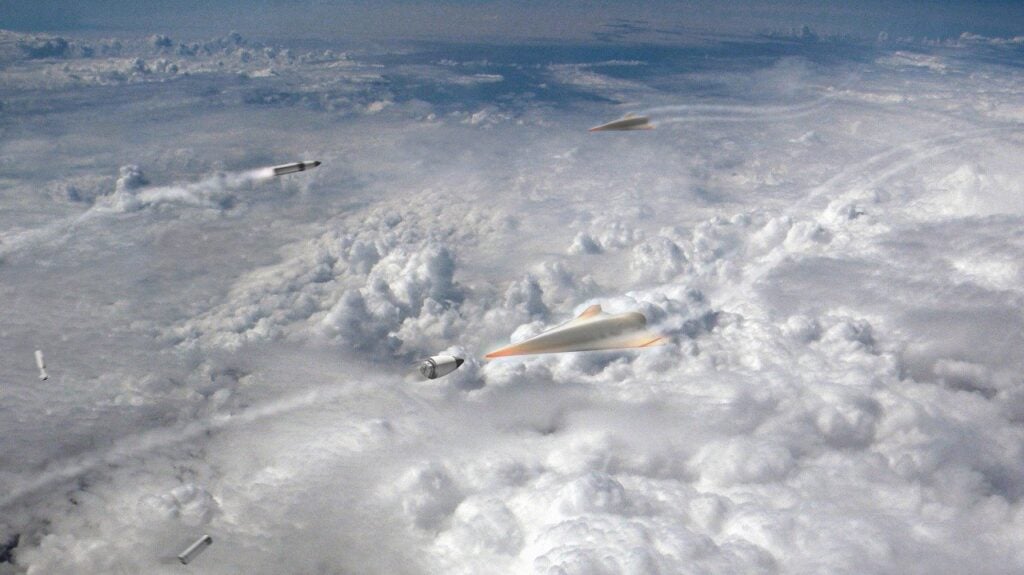
An artist’s conception of DARPA’s anti-hypersonic threat Glide Breaker program. (Credit: DARPA)
WASHINGTON — Boeing has won a Defense Advanced Research Projects Agency (DARPA) contract to perform crucial testing for the research agency’s Glide Breaker hypersonic interceptor concept, the company announced today.
Glide Breaker looks to develop key enabling technologies and a prototype kinetic kill vehicle that would slam into incoming hypersonic vehicles during their glide phase, before they begin rapid maneuvers and become more difficult to target. DARPA’s program manager, Maj. Nathan Greiner, told Breaking Defense last November that such interceptors are aimed at providing regional missile defenses in areas where the US troops and assets are forward deployed — such as the Indo-Pacific theater, the focus of most of America’s hypersonic development.
Boeing’s contract is for Phase 2, a four-year effort aimed at developing “the technical understanding of jet interactions necessary to enable design of propulsion control systems” via wind tunnel and flight testing, according to DARPA’s bid solicitation issued in April.
Gil Griffon, executive director of Boeing Phantom Works Advanced Weapons, said in a press release today that this work “will determine how factors like hypersonic airflow and firing jet thrusters to guide the vehicle affect system performance at extreme speed and altitude in a representative digital environment.
“We’re operating on the cutting edge of what’s possible in terms of intercepting an extremely fast object in an incredibly dynamic environment,” he added.
During its first phase, the Glide Breaker program focused on developing and demonstrating a divert and attitude control system (DACS) that enables a kill vehicle to maneuver. Northrop Grumman was granted $13 million, and Aerojet Rocketdyne $12 million by DARPA for that work.
According to DARPA’s bid solicitation, Phase 1 “was a critical step, but did not address endoatmospheric effects,” such as controlling the kill vehicle in the midst of the complex jet interactions between the DACS jets and the “hypersonic cross flow” — interactions that are little understood. Glide Breaker’s Phase 2 seeks to understand that phenomena.
“If successful, the results of Phase 2 will provide the foundation for a future program of record interceptor,” the solicitation said.
Meanwhile, the Missile Defense Agency also is working with two prime contractors, Northrop Grumman and Raytheon (now a business unit of parent company RTX), to develop a Glide Phase Interceptor (GPI) in the hopes of achieving an initial deployment in 2035.























